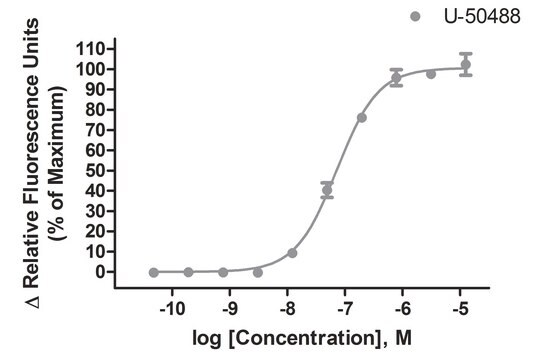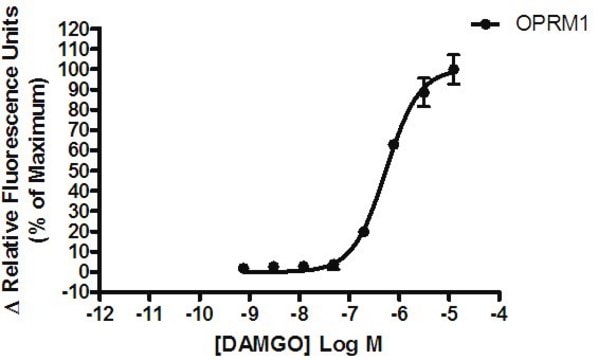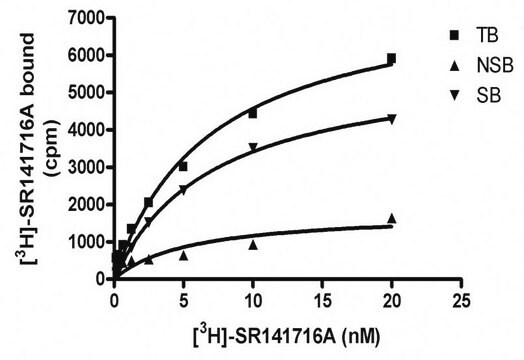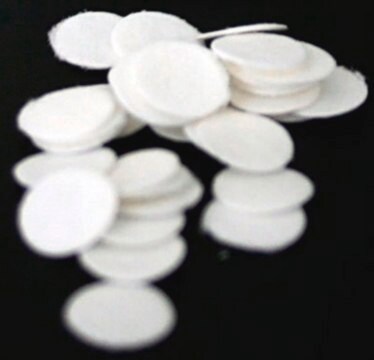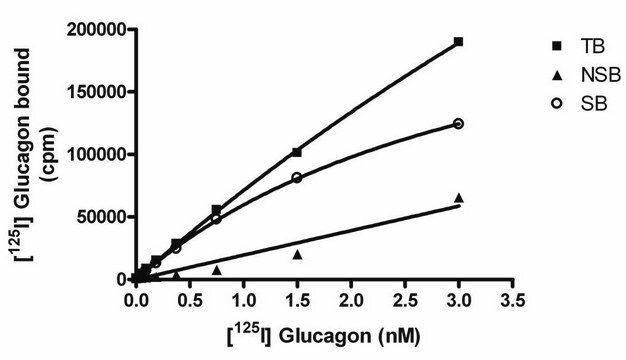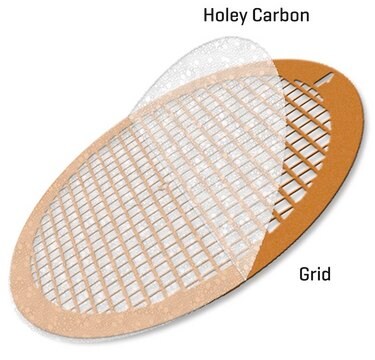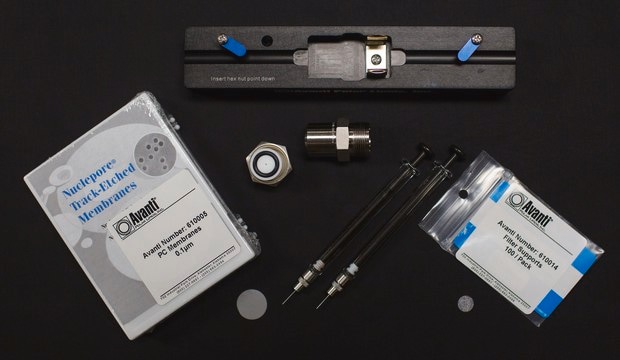HTS101M
CHEMISCREEN MEMBRANE PREPARATION RECOMBINANT HUMAN µ (Mu) OPIOID RECEPTOR
Human Mu / OP3 / MOP / MOR GPCR membrane preparation for GTPγS Binding & Radioligand Binding Assays.
Sinônimo(s):
ChemiSCREEN Receptor Kit, µ-Opioid Receptor Membrane Prep
Faça loginpara ver os preços organizacionais e de contrato
About This Item
Código UNSPSC:
41106514
eCl@ss:
32161000
NACRES:
NA.41
Produtos recomendados
fonte biológica
human
Nível de qualidade
recombinante
expressed in Chem-5 cells
fabricante/nome comercial
ChemiScreen
Chemicon®
técnica(s)
ligand binding assay: suitable (GTPγS)
radioligand binding assay (RLBA): suitable
nº de adesão NCBI
nº de adesão UniProt
Condições de expedição
dry ice
Informações sobre genes
human ... OPRM1(4988)
Descrição geral
Full-length human OPRM1 cDNA encoding Mu
Opiates derived from the opium poppy, Papaver somniferum, have been used in for millenia for their anti-diarrheal, analgesic and euphoric properties. More recently, endogenous peptides, enkephalins, dynorphins, and endorphins, were found to bind to the same sites as opiate alkaloids. The receptors for the classical opioids are three related GPCRs, µ κ and δ that activate Gi/o to reduce intracellular cAMP levels. Most clinically used opioids function by activation of the µ opioid receptor (Dhawan et al., 1996). Chemicon′s µ opioid receptor membrane preparations are crude membrane preparations made from our proprietary stable recombinant cell lines to ensure high-level of GPCR surface expression; thus, they are ideal HTS tools for screening of µ opioid receptor interactions with its ligands. The membrane preparations exhibit an EC50 of 1.6nM for DAMGO in a GTPγS binding assay.
Aplicação
GTPγS Binding and Radioligand Binding Assay.
Ações bioquímicas/fisiológicas
GPCR Class: A
Protein Target: Mu / OP3 / MOP / MOR
Target Sub-Family: Opioid
Qualidade
EC50 in GTPγS binding assay by DAMGO: ~ 1.6 nM
Especificações
Inucbation Conditions
ASSAY CONDITIONS: Membranes are permeabilized by addition of saponin to an equal concentration by mass, then mixed with [35S]-GTPγS (final concentration of 0.3 nM) in 20 mM HEPES, pH 7.4/100 mM NaCl/10 mM MgCl2/0.5 μM GDP in a nonbinding 96-well plate. Unlabeled DAMGO added to the final concentration indicated in Figure 1 (final volume 100 μL), and incubated for 30 min at 30°C. The binding reaction is transferred to an FB filter plate (Millipore MAHF B1H) previously prewetted with water, and washed 3 times (1 mL per well per wash) with cold 10 mM sodium phosphate, pH 7.4. The plate is dried and counted.
One vial contains enough membranes for at least 200 assays (units), where one unit is the amount of membrane that will yield greater than 1000 cpm specific DAMGO-stimulated [35S]-GTPγS binding.
The μ opioid receptor membrane preparation is expected to be functional in a radioligand binding assay; however, the end user will need to determine the optimal radiolabeled ligand for use with this product.
ASSAY CONDITIONS: Membranes are permeabilized by addition of saponin to an equal concentration by mass, then mixed with [35S]-GTPγS (final concentration of 0.3 nM) in 20 mM HEPES, pH 7.4/100 mM NaCl/10 mM MgCl2/0.5 μM GDP in a nonbinding 96-well plate. Unlabeled DAMGO added to the final concentration indicated in Figure 1 (final volume 100 μL), and incubated for 30 min at 30°C. The binding reaction is transferred to an FB filter plate (Millipore MAHF B1H) previously prewetted with water, and washed 3 times (1 mL per well per wash) with cold 10 mM sodium phosphate, pH 7.4. The plate is dried and counted.
One vial contains enough membranes for at least 200 assays (units), where one unit is the amount of membrane that will yield greater than 1000 cpm specific DAMGO-stimulated [35S]-GTPγS binding.
The μ opioid receptor membrane preparation is expected to be functional in a radioligand binding assay; however, the end user will need to determine the optimal radiolabeled ligand for use with this product.
forma física
Liquid in packaging buffer: 50 mM Tris pH 7.4, 10% glycerol and 1% BSA with no preservatives.
Packaging method: Membrane protein was adjusted to the indicated concentration in packaging buffer, rapidly frozen, and stored at -80°C
Packaging method: Membrane protein was adjusted to the indicated concentration in packaging buffer, rapidly frozen, and stored at -80°C
Armazenamento e estabilidade
Maintain frozen at -70°C for up to 2 years. Do not freeze and thaw.
Informações legais
CHEMICON is a registered trademark of Merck KGaA, Darmstadt, Germany
Exoneração de responsabilidade
Unless otherwise stated in our catalog or other company documentation accompanying the product(s), our products are intended for research use only and are not to be used for any other purpose, which includes but is not limited to, unauthorized commercial uses, in vitro diagnostic uses, ex vivo or in vivo therapeutic uses or any type of consumption or application to humans or animals.
Código de classe de armazenamento
12 - Non Combustible Liquids
Classe de risco de água (WGK)
WGK 2
Certificados de análise (COA)
Busque Certificados de análise (COA) digitando o Número do Lote do produto. Os números de lote e remessa podem ser encontrados no rótulo de um produto após a palavra “Lot” ou “Batch”.
Já possui este produto?
Encontre a documentação dos produtos que você adquiriu recentemente na biblioteca de documentos.
Donna A Volpe et al.
Regulatory toxicology and pharmacology : RTP, 59(3), 385-390 (2011-01-11)
The safe disposal of unused opioid drugs is an area of regulatory concern. While toilet flushing is recommended for some drugs to prevent accidental exposure, there is a need for data that can support a more consistent disposal policy based
Thomas T Joseph et al.
ACS chemical neuroscience, 12(9), 1487-1497 (2021-04-28)
Ketamine is an anesthetic, analgesic, and antidepressant whose secondary metabolite (2R,6R)-hydroxynorketamine (HNK) has N-methyl-d-aspartate-receptor-independent antidepressant activity in a rodent model. In humans, naltrexone attenuates its antidepressant effect, consistent with opioid pathway involvement. No detailed biophysical description is available of opioid
Nossa equipe de cientistas tem experiência em todas as áreas de pesquisa, incluindo Life Sciences, ciência de materiais, síntese química, cromatografia, química analítica e muitas outras.
Entre em contato com a assistência técnica